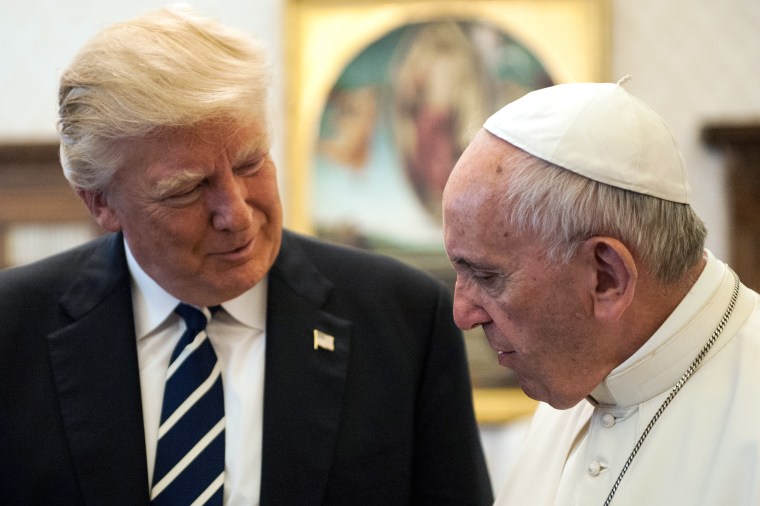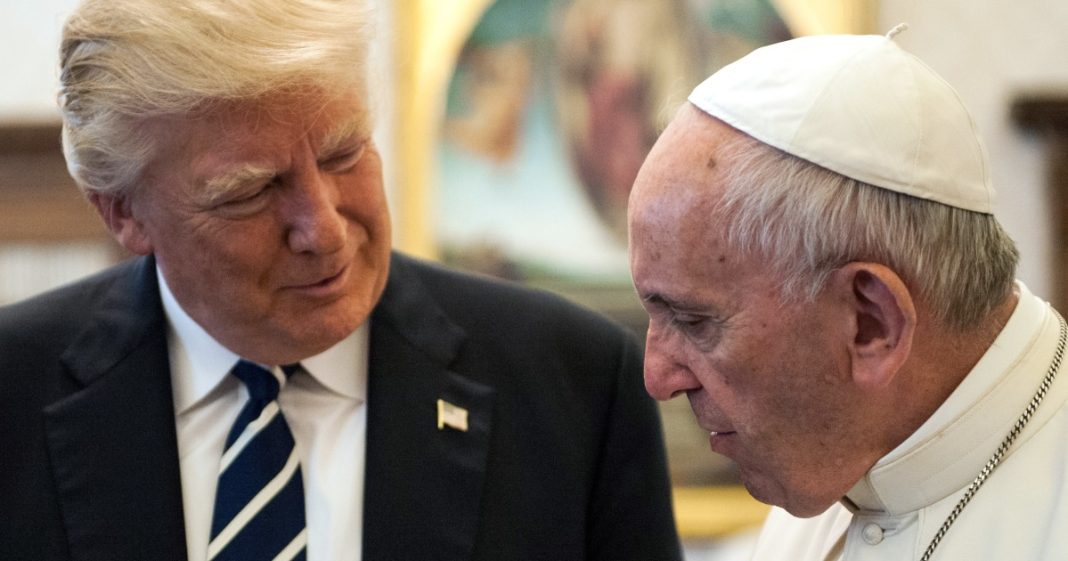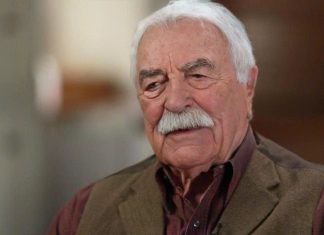Controversy Erupts as Trump Posts AI-Generated Image as Pope
The political landscape often intertwines with religious sentiments, and this dynamic was glaringly evident recently when former President Donald Trump shared an AI-generated image depicting himself as the Pope. This post, which surfaced just days before a papal conclave scheduled to select the next head of the Catholic Church, sparked a significant backlash from various Catholic groups and individuals who found the portrayal to be distasteful and inappropriate. This incident raises important questions about the intersection of politics and religion in contemporary society and how humor can sometimes cross a line into disrespect.

A Provocative Image Just Before the Conclave
On a Friday evening, Trump took to his social media platform, Truth Social, to post the controversial image, which quickly gained traction after the White House amplified it on X, formerly known as Twitter. The image features Trump adorned in traditional white papal attire, complete with a large crucifix and seated on a chair embellished with golden accents—elements that are reminiscent of the attire worn by Pope Francis and his predecessors. Such striking portrayals, though meant for humor, can easily veer into the realm of political satire that many may find offensive. Critics argued that such a depiction trivializes the solemnity associated with the papacy and its significance within the Catholic faith, particularly during such a sensitive time in the Church’s history.
Catholic Leaders Voice Their Disapproval
The backlash was spearheaded by the New York State Catholic Conference, which serves as a voice for bishops throughout the state. They expressed their disdain through a post on X, stating, “There is nothing clever or funny about this image, Mr. President. We just buried our beloved Pope Francis and the cardinals are about to enter a solemn conclave to elect a new successor of St. Peter. Do not mock us.” This statement underscores the gravity of the situation, indicating that many view the post as not merely a joke but as an affront to the memory of a recently deceased religious leader. Notably, this reflects a growing sentiment within the Catholic community that the blending of politics and humor can be irreverent, especially when it targets sacred symbols or figures.
Reactions from Notable Figures
Cardinal Timothy Dolan, a prominent figure in the Catholic Church and a member of the White House’s Religious Liberty Commission, responded to the image by stating that it “wasn’t good.” He further remarked that it left a poor impression, which spoke to a broader sentiment among religious leaders regarding the appropriateness of such portrayals. Dolan was among the more than 100 cardinals who were gathering in Vatican City just days later for the pivotal conclave, which makes the timing of the image’s release all the more controversial. The juxtaposition of political satire against the backdrop of serious religious proceedings can incite strong emotions, leading to further polarization between political figures and religious institutions.
International Criticism and Social Media Responses
The outcry was not limited to American religious leaders.
Former Italian Prime Minister Matteo Renzi, known for his critiques of Trump, took to social media to voice his concerns, stating that the image “offends believers, insults institutions and shows that the leader of the global right enjoys being a clown.” This international commentary illustrates how Trump’s actions reverberate beyond U.S.
borders, impacting perceptions of American leadership on the world stage. The use of social media to express discontent further highlights the interconnectedness of global political discourse and the role of religious sentiment as a unifying or divisive force across countries.
Mixed Reactions from Political Figures
Political figures within the U.S. had varied responses to the controversy. Vice President JD Vance, who identifies as Catholic, engaged in the discourse by responding to criticism on social media.
When asked if he was comfortable with Trump’s depiction of the Pope, Vance remarked, “As a general rule, I’m fine with people telling jokes and not fine with people starting stupid wars that kill thousands of my countrymen.” This comment reflects the complexity inherent in navigating the relationship between humor, politics, and respect for religious figures.
Vance’s perspective highlights the ongoing tension between the freedom of expression and the need for sensitivity when discussing profound religious symbols—an issue that continues to be at the forefront of public debate.
White House’s Defense and Trump’s Previous Remarks
In defense of Trump, White House Press Secretary Karoline Leavitt remarked that the former president had flown to Italy to pay his respects at Pope Francis’s funeral, emphasizing his longstanding commitment to championing religious liberty for Catholics.
Additionally, Trump had previously expressed a light-hearted desire to become the Pope himself, stating, “I’d like to be pope. That would be my No. 1 choice.” However, many critics argue that such remarks trivialize the solemnity associated with the papacy and its importance in the Catholic faith.
This defense adds another layer to the discussion, as it suggests a dichotomy between intent and reception; while Trump may not have meant any harm, the reaction from the community indicates a perceived disconnection from the gravity of the situation.
The Legacy of Pope Francis
Pope Francis, who passed away on April 21 due to health complications, left behind a legacy of progressive reform and a commitment to social justice issues.
His death marked the end of a significant era in the Catholic Church, prompting discussions around the future direction of the institution amid changing societal norms.
The upcoming conclave, focused on electing a new pope, is likely to be steeped in reflection over Francis’s impact and the pressing need for the Church to engage with contemporary issues like climate change, immigration, and social equality.
Given the recent events and this impending conclave, the need for respectful dialogue surrounding the papacy becomes even more pressing. The blending of political satire with religious imagery holds the potential to alienate believers and undermine the gravity of such a sacred office.
Conclusion: Navigating Humor and Respect in Public Discourse
The incident involving Trump’s AI-generated image as Pope presents a complex intersection of politics, humor, and faith. As societal norms continue to evolve, understanding the ramifications of such portrayals is crucial for maintaining mutual respect among differing beliefs.
While humor can serve as a tool for engagement, it must be wielded with care, particularly when it involves figures of profound significance, such as the Pope.
The backlash from the Catholic community serves as a reminder of the need for sensitivity in public discourse, especially during times of mourning and transition.
The challenge remains in finding a balance between freedom of expression and the respect due to deeply held beliefs, an issue that will continue to resonate in the years to come.

















